Cisco’s latest addition to the Catalyst 9100 Series Access Point Platform is one of their most flexible APs in the last few years. The Catalyst 9130 Wi-Fi 6 Access Point features a Tri-Radio setup, which allows you to run dual-5GHz radios while also having 2.4GHz enabled. I see this as being very helpful in environments where 2.4GHz is used for location tracking (healthcare, manufacturing, warehouses, etc.) and you need a very consistent and predictable 2.4GHz AP layout.
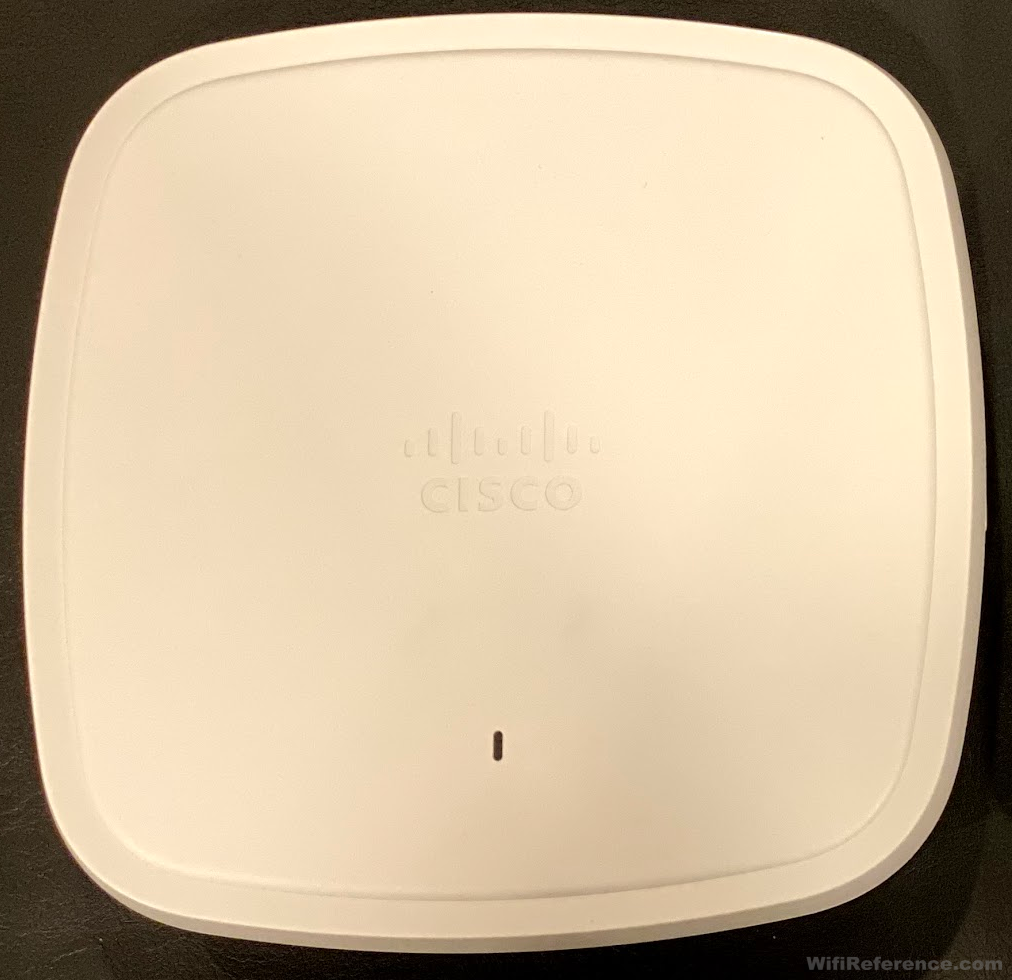
In many ways, the Catalyst 9130 AP can be thought of as the bigger brother to the Catalyst 9117 AP. They are both capable of 8×8 on 5GHz and they share some internal circuitry. However, one distinct difference is that the Catalyst 9130 AP is Wi-Fi 6 Certified by the Wi-Fi Alliance and the 9117 never will be.
I’ve been fortunate enough to be able to test this AP in my environment for the last month or so, and it has behaved remarkably well. While I haven’t been able to test the Tri-Radio capabilities yet (it is coming in a future software release), I am impressed with how well it deals with clients that have a weak signal. The 8 transmitters and receivers really help out in that scenario. I don’t have any 8×8 (or even 4×4) clients to drag race with, but I have done some OFDMA testing with a Galaxy S10 and iPhone 11 Pro. The AP has been stable and well-performing throughout my tests, so I expect it to be a very good AP in my customers’ production environments. I can’t wait to be able to see this AP in a high-density environment with a majority of Wi-Fi 6 clients to see MU-MIMO and OFDMA really make some headway in Tri-Radio mode.
Near the end of the article, I’ve posted some of my own comparison photos so that you can see how the 9130 looks next to some other Cisco Access Points (9120, 9117, 9115 and 4802).
Table of Contents
Tri-Radio Capability
While Cisco is not the first to release an AP with Tri-Radio capability, I do like the way they implemented it. Tri-Radios give you a lot of flexibility in how you design the RF in your environment. You can have very dense areas with dual-5GHz, or medium density areas (or location tracking areas) with dual-5GHz+2.4GHz. And of course you can always just deploy it with a single 8×8 5GHz and 4×4 2.4GHz radio. The easiest way to think about it as 3 separate radios:
Radio 1: 2.4GHz 4×4
Radio 2: 5GHz 4×4
Radio 3: 5GHz 4×4
All three of these radios can be enabled simultaneously, on separate channels. In Tri-Radio mode, one of the 5GHz radios covers a “Macro cell” area, and the other 5GHz radio operates on a separate channel covering a “Meso cell” area. This is very similar to the AP2800, 3800 and 4800, except that the “Meso cell” coverage pattern is slightly larger than the previous “Micro cell.” When operating in Macro/Meso cell mode, the 5GHz channels must be at least 100MHz apart (the system handles this for you automatically). Additionally, both 4×4 5GHz radios can be combined into a single client-serving 8×8 5GHz radio. If you have a lot of clients that support MU-MIMO, it may actually benefit you to run this AP in 8×8 mode.
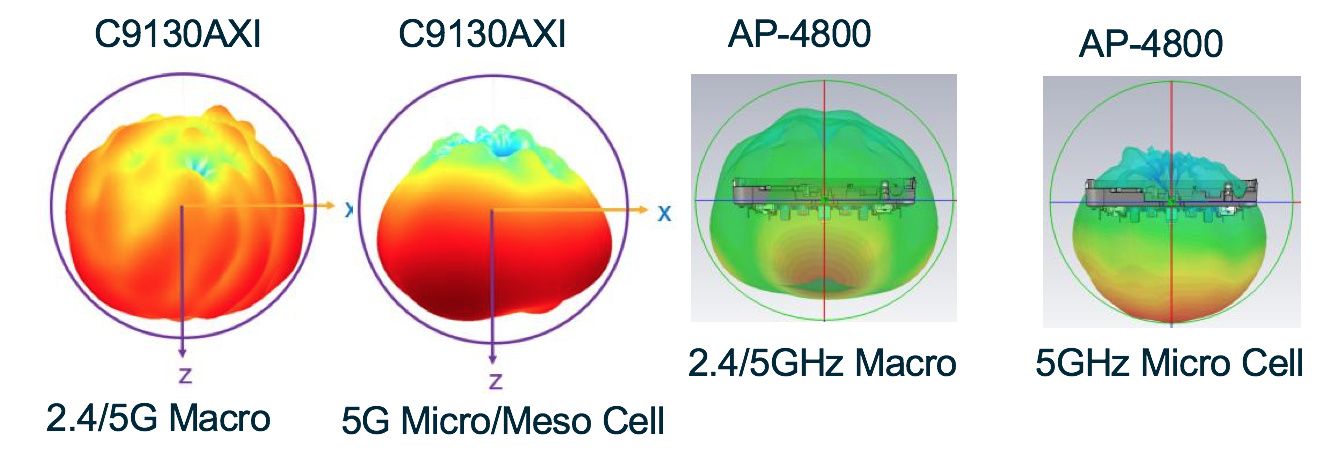
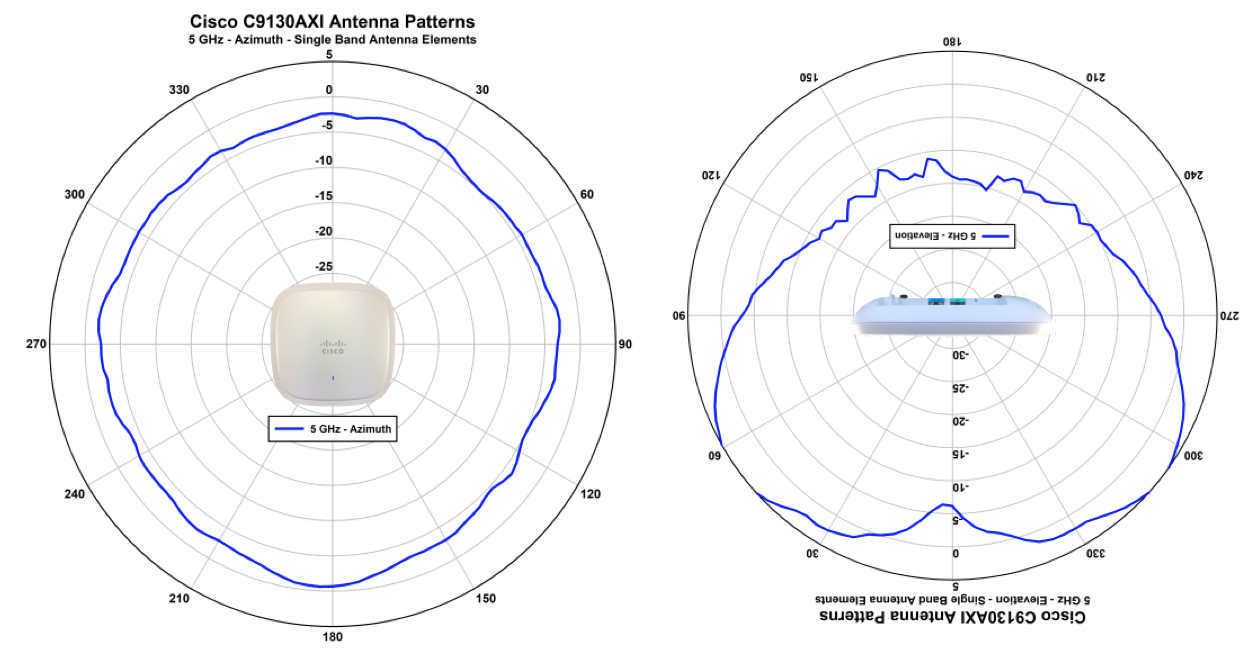
I rotated the orientation of the Meso Cell radiation pattern so that it would make more sense in comparison with the above image.
As with previous generations of Cisco APs with Flexible Radios, the radio modes can all be determined automatically or manually.
You can get a good look at the layout of the internal antenna elements in this photo:
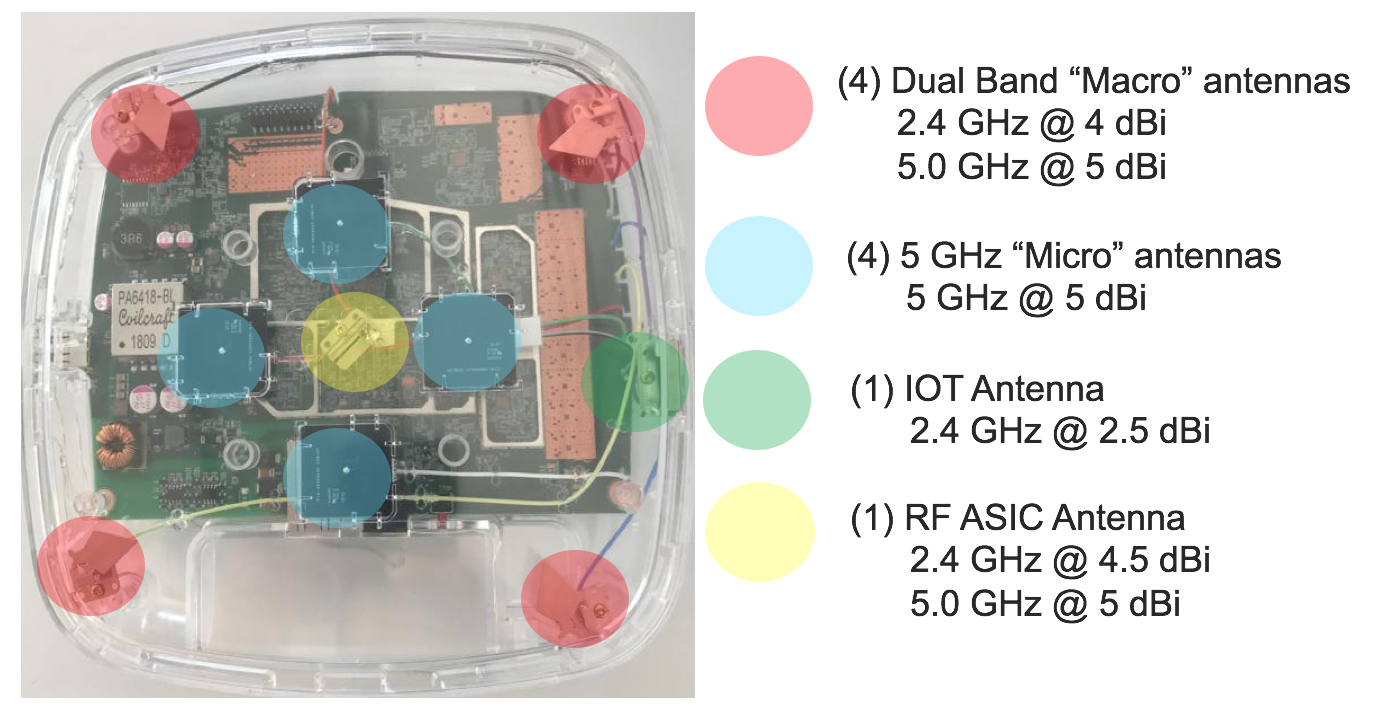
The “IOT” antenna above is capable of BLE, Zigbee and Thread protocols (same as the 9120 AP).
RF ASIC
The Catalyst 9130 AP has the same RF ASIC as the 9120 AP, with all of the same features and functionality. You can read more about the RF ASIC and its capabilities here: https://www.wifireference.com/2019/04/29/cisco-catalyst-9100-series-80211ax-aps-to-be-excited-about
Physical Dimensions
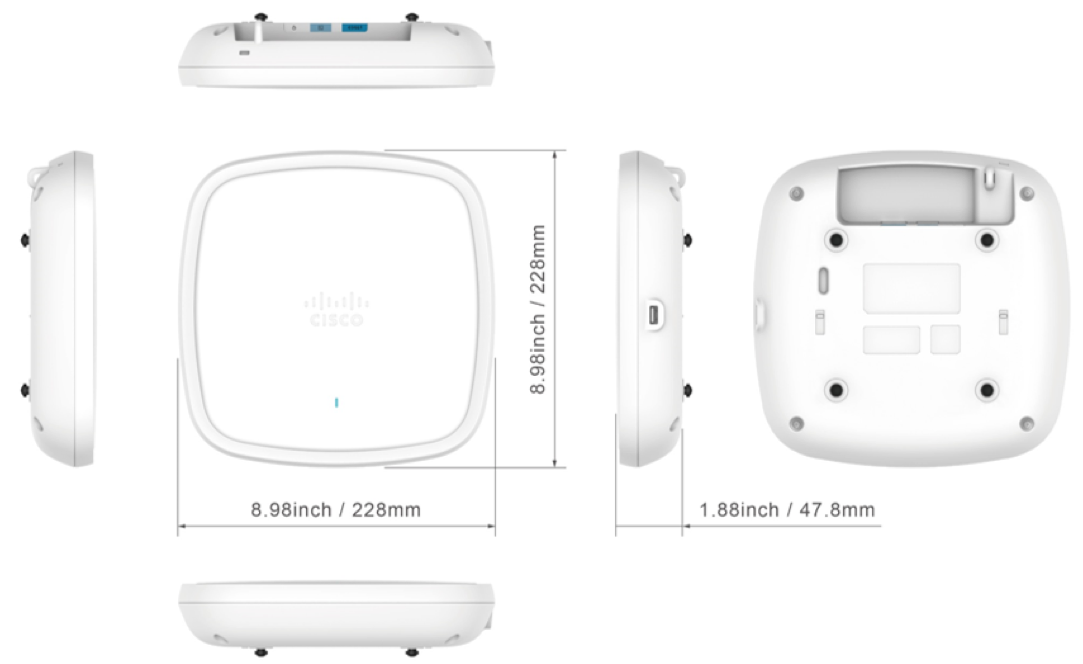
Catalyst 9130 AP Specifications
- Model Numbers
- Internal antennas: C9130AXI
- External antennas: C9130AXE
- Wi-Fi 6 Radio Modes
- 5GHz 8×8 + 2.4GHz 4×4
- 5GHz 4×4 + 5GHz 4×4 + 2.4GHz 4×4
- OFDMA with 37RUs
- Cisco RF ASIC for Layer 1 RF Analysis
- IoT-Ready with Zigbee and Thread compatibility
- 8-Port Smart Antenna Connection (C9130AXE external version)
- 1x 5Gbps mGig Ethernet Port
- Console Port
- Intelligent Capture support with DNAC
- Uses the same mounting bracket Cisco has been using for over a decade
PoE Power Requirements
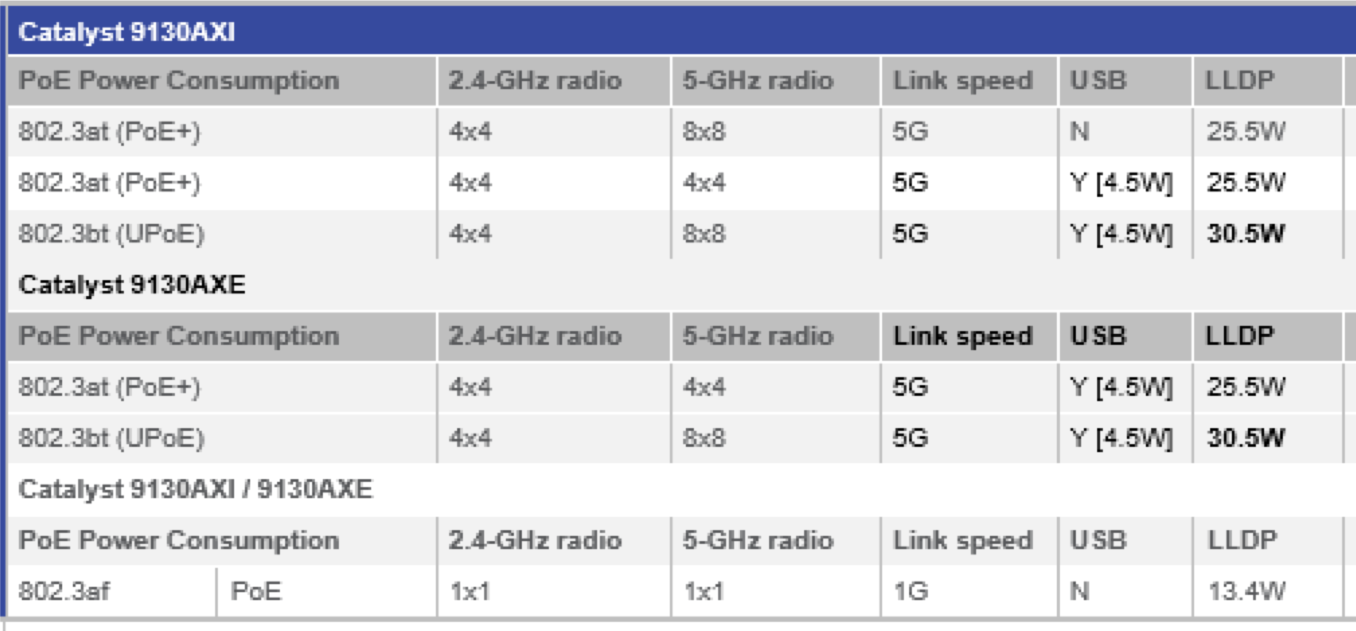
Minimum Supported Software Versions
- AireOS: 8.10
- Cat9800: 16.12.1s with AP Device Pack
- Tri-Radio support is coming in 17.2. AP operates in dual-radio mode in the interim
- DNAC: 1.3.1.2
- Prime Infrastructure: 3.7
Have I mentioned how excited I am to see the AP Device Pack feature actually being used as intended? I worried this was going to be another one of those features that was touted at its release but never actually got any love by way of future AP Device Pack releases. I’m very glad to see actual AP Device Packs in the wild.
External Antenna model
The external antenna version of the 9130 (C9130AXE) will include a new DART connector that supports all 8 antenna elements. It is one of very few 8×8 APs in the industry that supports external antennas. And the DART connector makes it a very clean install.
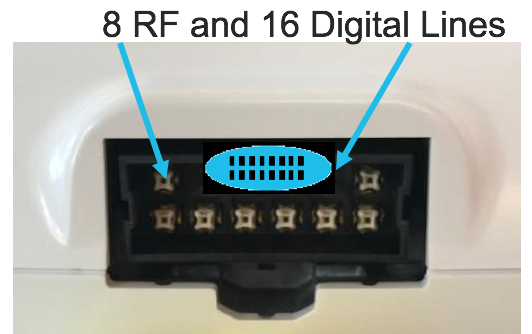
Note: The C9130AXE does not have internal antennas or RP-TNC connectors. The DART connector is the only method to connect an external antenna. Of course Cisco offers an 8-port DART to RP-TNC adapter (AIR-CAB-002-D8-R=). I believe they will also offer a DART to N-type adapter. The previous 4-port DART adapter cable is not compatible with the 9130AXE.
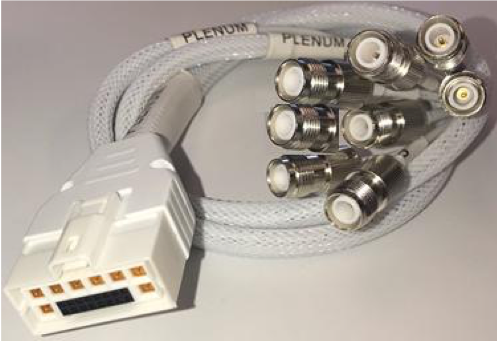
Cisco plans to introduce a line of antennas with direct DART connectors on them to make for the cleanest install possible.
Comparison Photos

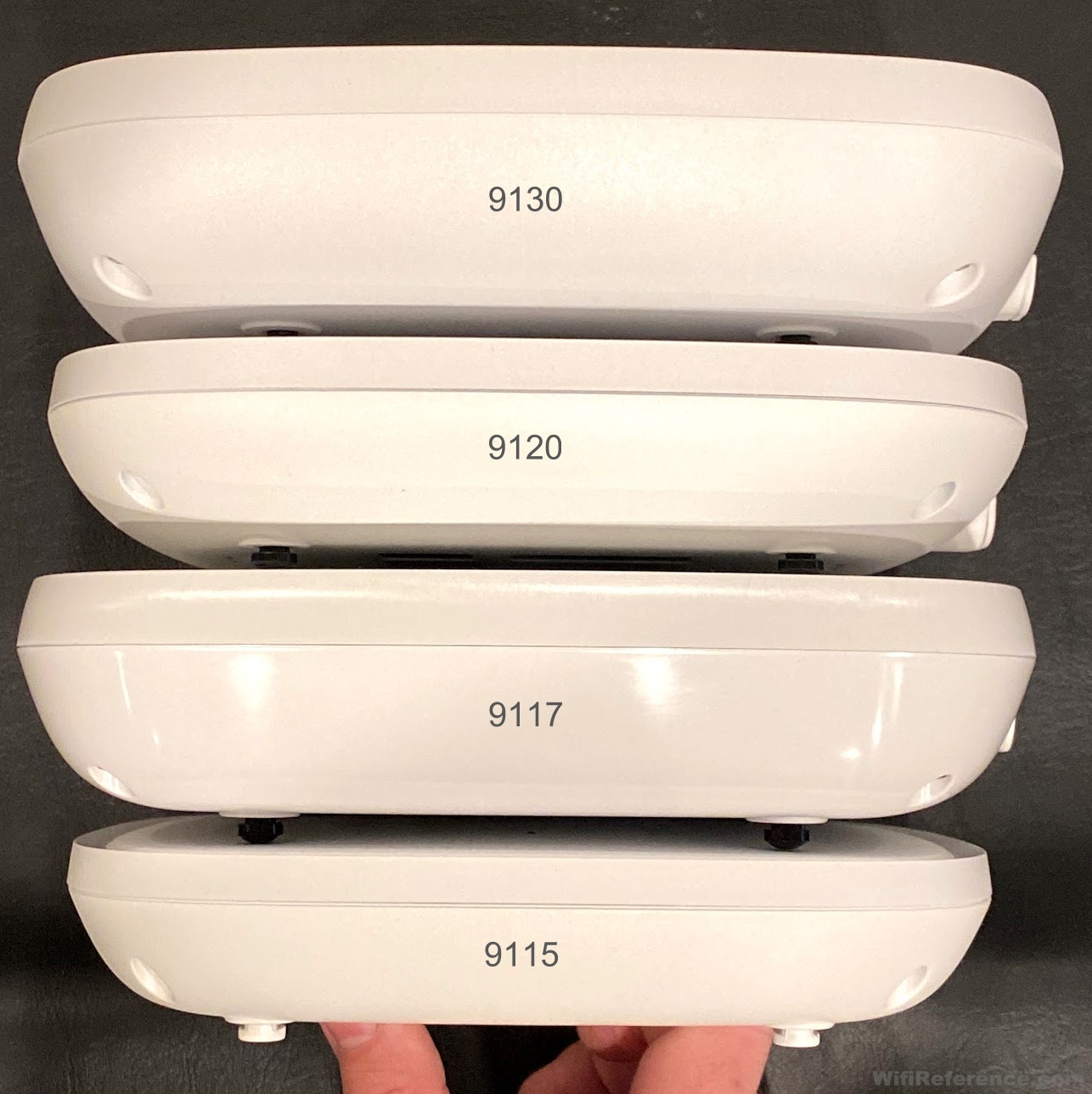
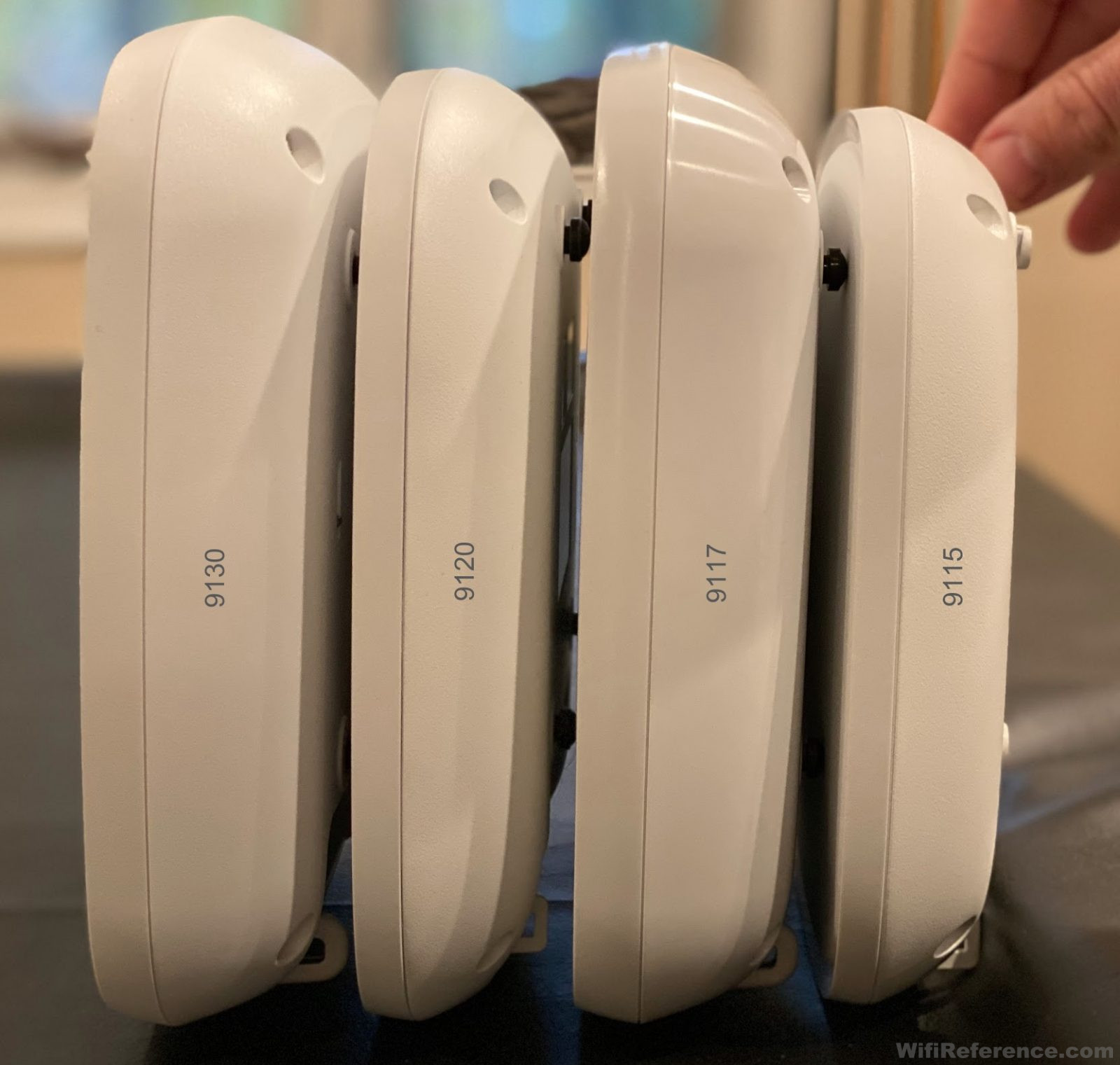
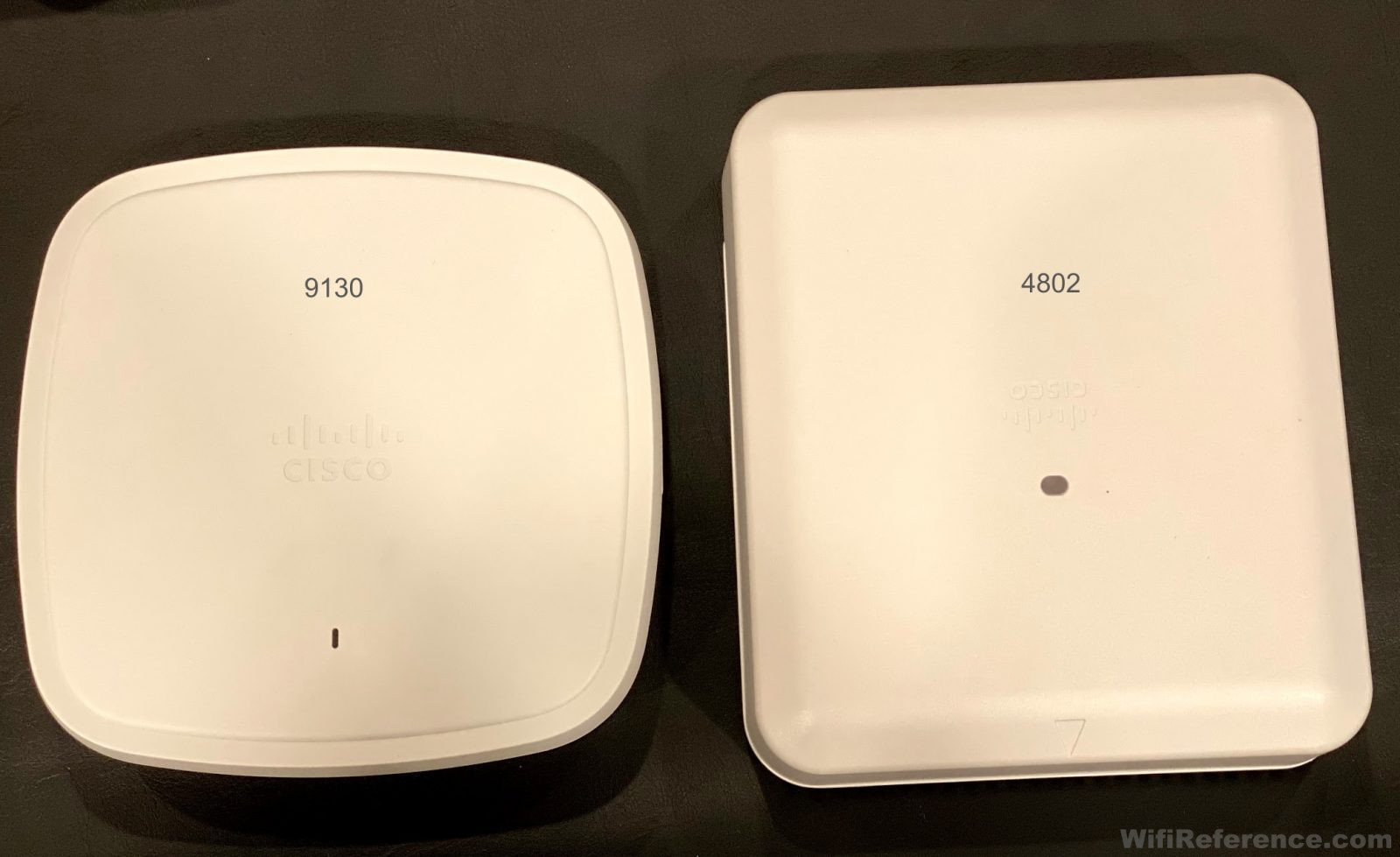
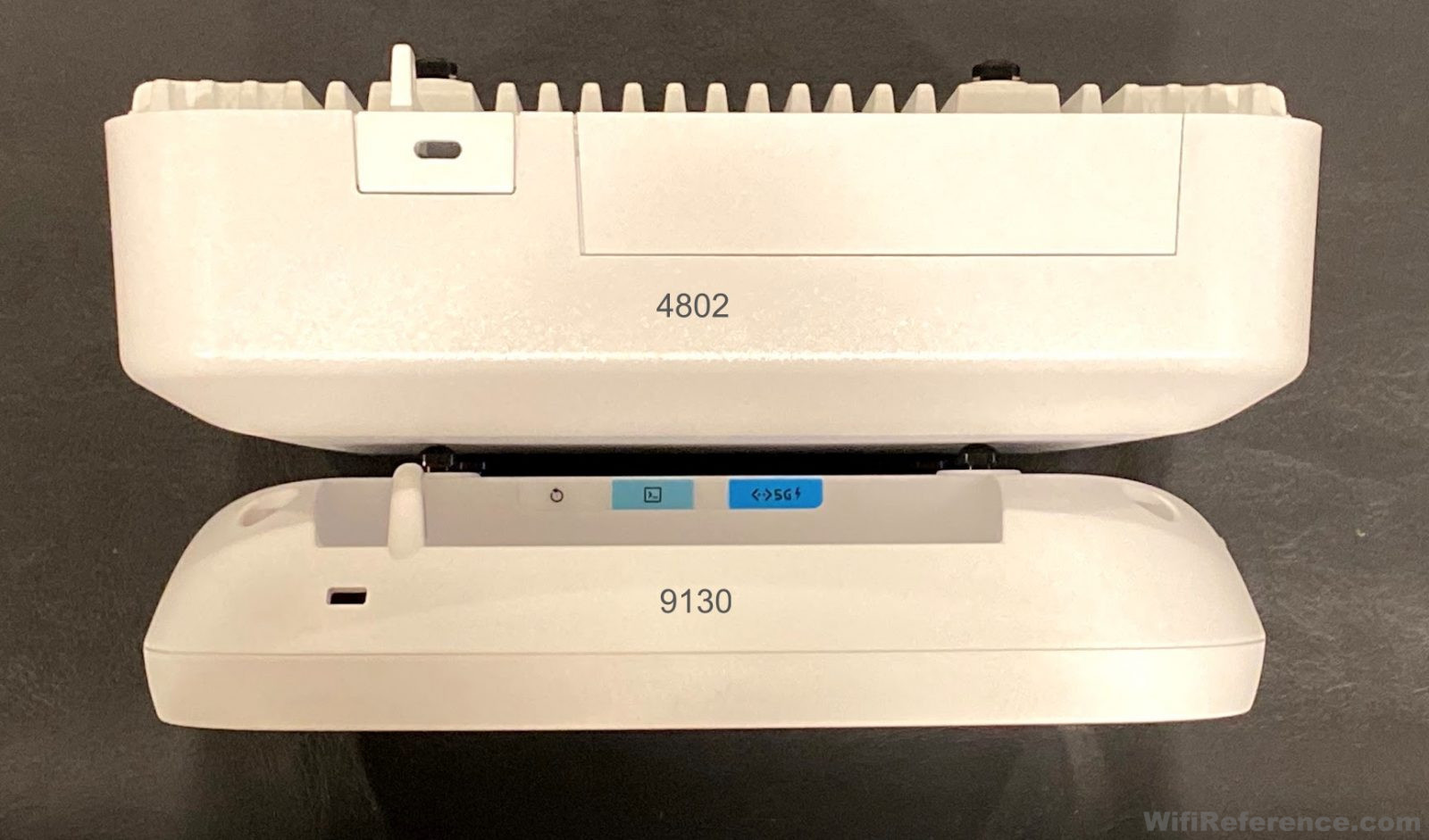
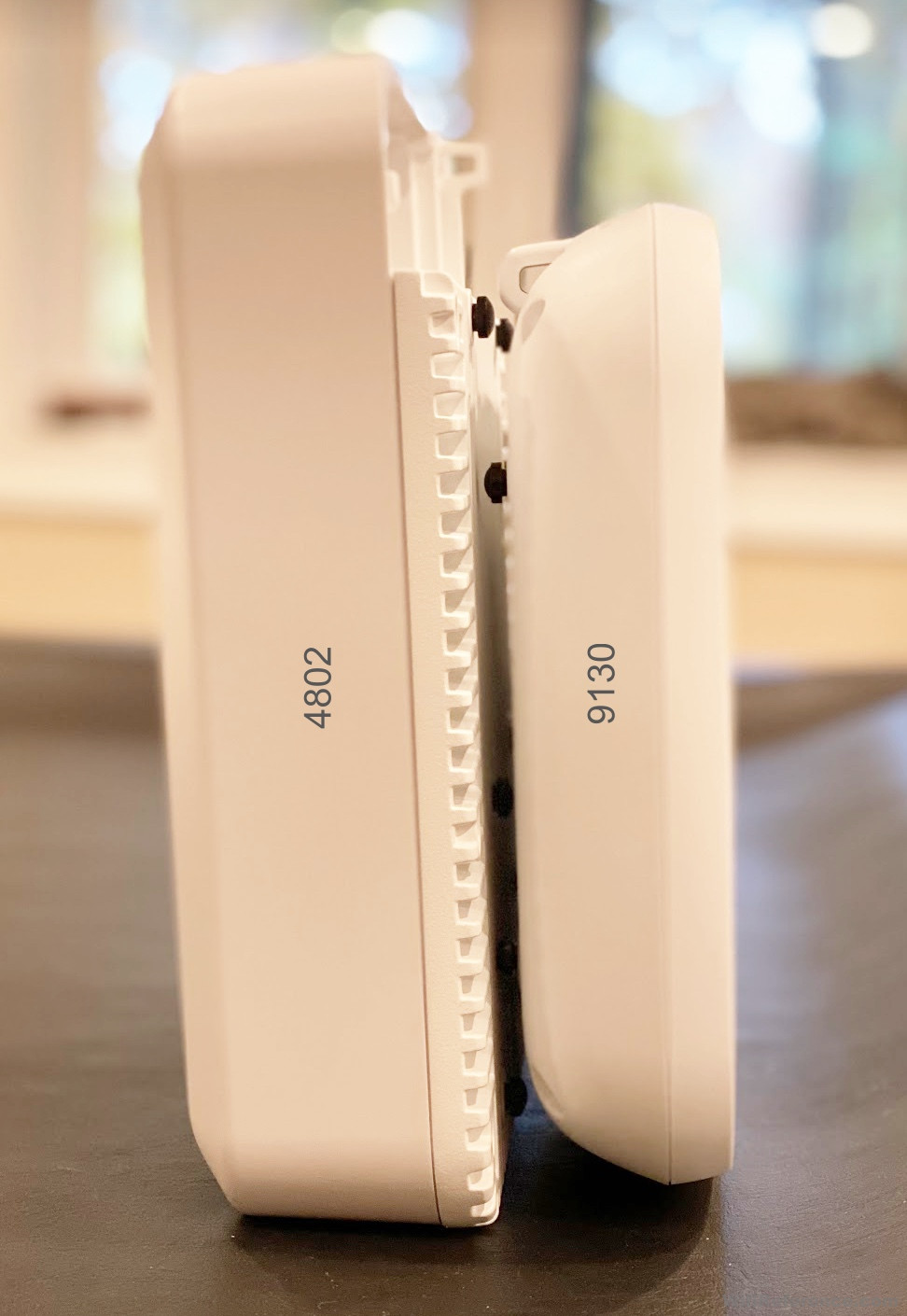

Great stuff!! Thanks!!!
This AP sounds like the cat’s meow! And as luck has it…I have a new advanced research building that I was going to put the 9120s in. Now…I think we should plan for 9130s. Do you think the antenna pattern will be similar to the 9120?
-Todd Smith
Similar? Yes, for the primary 2.4/5GHz radios. Identical? Probably not. I’d expect it to be similar enough that you’d get a similar coverage size, and probably the same quantity of APs by comparison. But it’s always important to test what the pattern actually looks like in your environment (I know you know that, but it has to be said).
Does C9130AXE has connector for standard antenna such as AIR-ANT2535SDW-R or it takes only patch antenna? Could not find a picture of C9130AXE.
Thanks
Kuriakose
The 9130AXE uses only the 8-port DART connector. There will be an adapter to go from the 8-port DART connector to RP-TNC (as discussed in this article). There will also be several Cisco antennas that feature direct 8-port DART connectors on them. These will include various radiation patterns (patch, omni, etc.).
Great article, thanks for that.
Are you able to share some thoughts on the differences between the 9120 and 9130 and the benefits that the additional features bring?
I’m working on a refresh at the moment, would love to try and get the 9130 over the line.
Cheers
Ben
The primary benefits of the 9130 are Tri-Radio mode (2.4+5+5) and 8×8. If your environment can benefit from having 2x 5GHz radios while still having 2.4GHz enabled, this is the only AP in the portfolio that can pull that off. 8×8 can have some significant benefits in MU-MIMO situations (if your clients support it), as well as OFDMA. 8×8 can also improve SNR with MRC on the receive end. Keep in mind, it draws more power (over 30W for full functionality). If you don’t have UPoE switches, you may not be able to take full advantage of the features.
Thank you for the excellent write-up! I have never used Cisco wireless devices before as I’ve always just used consumer level wifi routers but I am familiar with their older wired networking devices. Does the 9130 require any ongoing license fees like their Meriki line does (i.e. license expires and hardware bricks)? I dislike the subscription model but would like to ensure I get regular security updates for at least a reasonable number of years. I am not interested in any of their AI/cloud based services.
Cisco does require that you pay a DNA subscription license on a 9130 (all 9100 series APs) to stay compliant. However, unlike Meraki, the AP/network does not go down if you stop paying for the subscription.
Thank you for great posting!
Do you know which radio chip vendor used for C9130(ap1g6a) and C9105(ap1g8)?
I just want to ask if the customer purchase the C9130AXE-A, does this model includes any antennas?
Thank you
No, it does not.
In an environment, is it a problem to mix a 9120AXE with 9130AXI?
The reason for this is the more simple remote antenna connection (TPC) on a 9120AXE.
I would avoid this, if possible. The 9130 uses the QCA chipset and the 9120 uses the Broadcom chipset. The 9130 is also 8×8. As a result, some clients may prefer one AP over the other, and cause roaming issues. You may also experience slightly different client behavior on the 9120 than the 9130, due to the different chipset. IF the only reason you want to use the 9120 is because of the RP-TNC connectors, you can purchase a DART-8 to RP-TNC adapter and still connect RP-TNC antennas to the 9130AXE.
My environment consists of mostly 2700 and 3100 AP’s but I need to add more AP’s. Would it be ok to add either 9120’s or 9130’s into my environment? Would the 9120’s roam better with my current 2700/3100’s than adding 9130’s? Thank you!
I would recommend a strategy where you can replace all of the APs in a specific building/area with the new 9120s/9130s instead of mixing them together. Since 9120s and 9130s are both 802.11ax or Wi-Fi 6 APs, and the 2702s are 802.11ac Wave 1 APs, clients may still try to prefer the 11ax APs when roaming. It’s always best to try to keep all APs in a particular area of the same generation (11ax vs 11ac, etc.) for that reason. Clients don’t always make good decisions, so it’s important to keep things consistent.
Is It possible to use 9130 together with AP 9120? Or have any issue Do I need to pay attention? I am asking that, because I have an Office that already have 9120 AP and I need to cover more areas with Wi-Fi, and I do not want waste money buying more 9120.
See my above reply. Most of that info applies to your scenario as well. I would avoid mixing APs with different capabilities in the same environment.
Anyone know about an accessories for the mounting of single TNC antennas? in order to avoid a bunch of antennas?
I appreciate the comments.
Regards,
Noticed that the 9130 has a 6dB gain 5 GHz antenna. Can we expect a slightly greater coverage area on the 5GHz from 9130 WAPs when compared to 9120 WAPs?